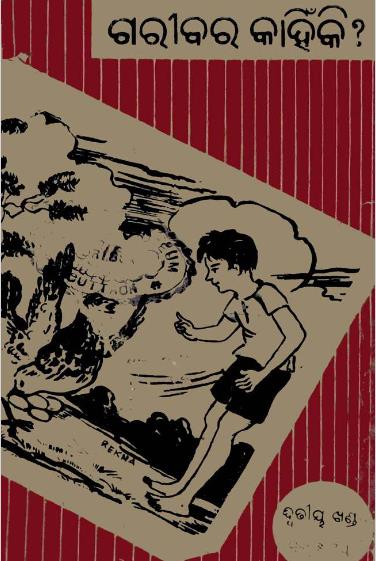In the rich landscape of Odia literature, the year 1949 marked the publication of Garibara Kahinki, a compelling collection of stories by the eminent writer Godabarisha Mahapatra. Through this profound work, Mahapatra delves into the lives of the marginalized and underprivileged, illuminating their struggles, dreams, and resilience in a society often indifferent to their plight. The title, which translates to The Stories of the Poor, encapsulates the essence of the narratives, inviting readers to engage with the harrowing yet inspiring tales of the less fortunate.
Garibara Kahinki is not merely a collection of stories; it is a powerful exploration of the socio-economic realities faced by the impoverished classes in Odisha during the mid-20th century. Mahapatra’s keen observation and empathetic approach allow him to portray the multifaceted aspects of poverty, revealing how it shapes the lives, aspirations, and relationships of individuals. Each story serves as a lens through which the reader can view the stark realities of life in rural Odisha, highlighting issues such as caste discrimination, economic hardships, and lack of access to education and basic necessities.
One of the hallmark qualities of Mahapatra’s writing is his ability to breathe life into his characters. In Garibara Kahinki, he introduces readers to a diverse array of individuals, each with their unique stories and struggles. Whether it’s a farmer fighting against the odds to sustain his family or a mother striving to provide a better future for her children, Mahapatra’s characters are relatable and real. Their emotions resonate deeply, evoking compassion and prompting readers to reflect on the societal structures that perpetuate poverty and inequality.
The storytelling in Garibara Kahinki is marked by its simplicity and authenticity. Mahapatra employs a straightforward narrative style that captures the vernacular and cultural nuances of Odia life. This grounded approach allows readers to immerse themselves fully in the stories, making the experiences of the characters all the more poignant. The dialogues are rich with local idioms and expressions, grounding the narratives in the cultural context and enhancing their relatability.
Moreover, Mahapatra’s stories often carry underlying moral lessons that provoke thought and encourage social awareness. While he lays bare the harsh realities of poverty, he also emphasizes the values of resilience, hope, and humanity. The characters’ indomitable spirit serves as an inspiration, reminding readers that even in the face of adversity, the human spirit can triumph. This duality in his storytelling—acknowledging the struggles while celebrating the strength of human will—creates a compelling narrative that resonates across generations.
The historical context of Garibara Kahinki is also noteworthy. Published in a post-colonial India grappling with its identity and socio-economic challenges, Mahapatra’s work reflects the growing awareness of social issues and the need for change. The emphasis on the lives of the poor aligns with the broader narrative of social reform and upliftment that was gaining momentum during this period. By shedding light on the marginalized, Mahapatra contributes to the discourse on equality and justice, urging society to recognize and address the needs of its vulnerable members.
Books Info
| Books name | Garibara Kahinki / ଗରୀବର କାହିଁକି |
| Author | Godabarisha Mahapatra |
| No Of pages | 26 |
| Publisher | NA |
| Publication | 1949 |
| Printed At | NA |
| Distributor | NA |

